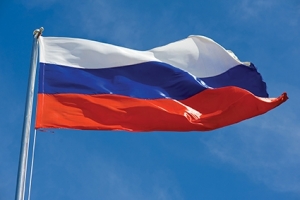2019: Where to Expect Russian Moves
Speaking about Russian attempts to increase its influence in Eurasia, suggestions can be made with regards to the next couple of years.
There are three traditional (major) vectors of Russian geopolitical influence which the country exercised throughout the centuries: the western front – East Europe, Ukraine, Belarus, Baltic States; South Caucasus; and the Central Asian region.
I will start with Russia’s western front. Moscow’s influence over the past 18 or so years has diminished substantially. Ukraine is largely lost and though it is fashionable to talk about how Russia has re-emerged as a major power in the region, proven by the annexation of Crimea and the war in Donbas (Eastern Ukraine), the point here is that Russia has added yet another antagonistic country to its border.
There is little chance that Russia will be able to enhance its position in Ukraine, unless military force is used. However, even then, from the long-term perspective, it will be tougher for Russia to confront Ukrainian military power, a re-invigorated western front (through economic sanctions and diplomatic moves).
In the Baltic States, Russians can hope for very little to increase their influence in the region. The NATO/EU umbrella is powerful enough to stop the Russians. In addition, there is also a historical animosity of local populations towards the Russian state which hampers Moscow’s projection of power.
Thus it leaves us with the only country – Belarus – which could be susceptible to Russian geopolitical influence in the coming years. Economically and militarily, the country relies on Russia. This lack of diversification is the source of both stability and instability for Minsk, but a crucial point here is that in Belarus there is room for Russia to increase its influence. This could happen through asking Minsk to station Russia militia on its soil. In the coming months there will be a good excuse for that as the US is likely to withdraw from the Intermediate-Range Nuclear Forces Treaty (INF). The US will probably try stationing its high-tech missiles on the European continent, which will make it urgent for Russia to use Belarus and the exclave land of Kaliningrad as forward-defense ground.
In the South Caucasus, it seems that Russian influence has certainly reached its limits in Georgia. Simply put, the Russians gained most of what they wanted from Georgia in 2008. There is little chance that any future Georgian governments would turn to Moscow (become pro-Russian) as public backlash will be significant, resulting in major disturbances for any decision-maker. There is also, as I argued in previous issues of GT, little room for a significant political rapprochement between Tbilisi and Moscow. The two might talk to each other on increasing economic activity, or even work on security issues, but larger questions such as Tbilisi turning to Moscow, are difficult to see in the longer-term perspective.
In Armenia, too, it is unlikely that there are spheres where Moscow wants to further increase its influence. Russia already possesses huge influence through owning vital infrastructure (railways and pipelines) as well as its own military base in Gyumri. What Russia wants is to keep the existent status quo in Armenia.
Perhaps the only country there Russia hopes to increase its stance is in Azerbaijan, but from the regional perspective any major concession from Baku to Moscow will be contingent upon Azerbaijan gaining further advantage in the Nagorno-Karabakh conflict. And there lies the complication for Moscow: the more it allows Baku to get back territories around Nagorno-Karabakh, the less, in the longer run, Azerbaijan will be susceptible to Moscow’s influence. Sure, Azerbaijan might accede to joining the Eurasian Economic Union in exchange for Russian support for Nagorno-Karabakh, but Baku’s alliance of convenience with Moscow will still be short-lived. Azerbaijan is simply too well-positioned (oil revenues and a good geographic position) to be easily influenced by Russia.
Thus, from two crucial regions, Russia will likely work hard to attain a bigger stance: in Belarus and Azerbaijan.
In a striking comparison with the western border or the South Caucasus, Russia will have a much freer hand in dealing with the Central Asian region. This is the space (consisting of five countries) where the EU/NATO and the US influence is minimal, to say the least. The only power Moscow will consider as its rival is China, but the two countries have larger geopolitical competitors – namely the US – which they want to constrain in Eurasia.
This free space which Russia has in Central Asia is in fact a result of the geopolitical shift which the country has been experiencing over the last decade or so. Simply put, Russia has little room for maneuver in the west, so it is turning to the east, which makes it likely that Russia will increase its military and economic capabilities in the region.
By Emil Avdaliani












